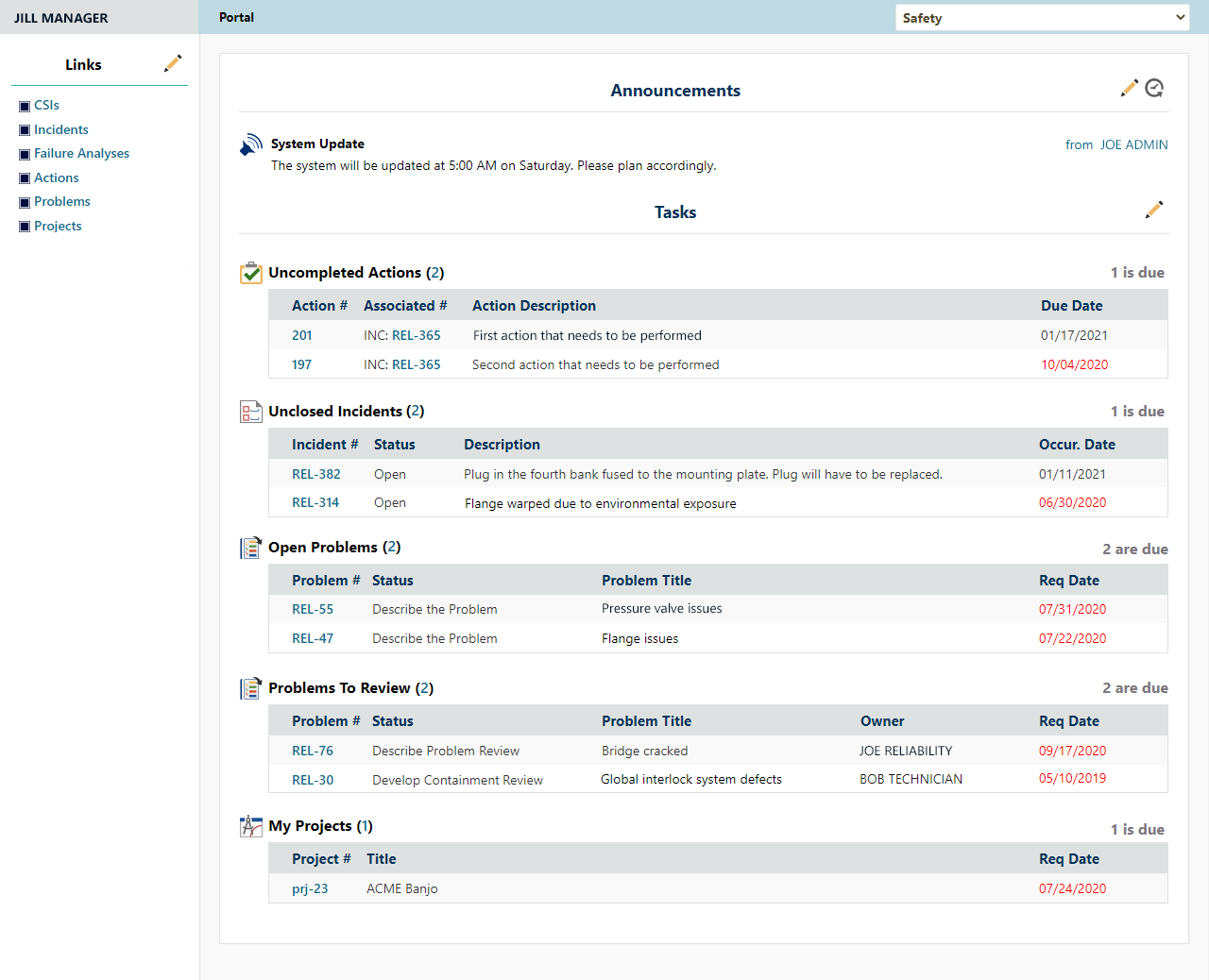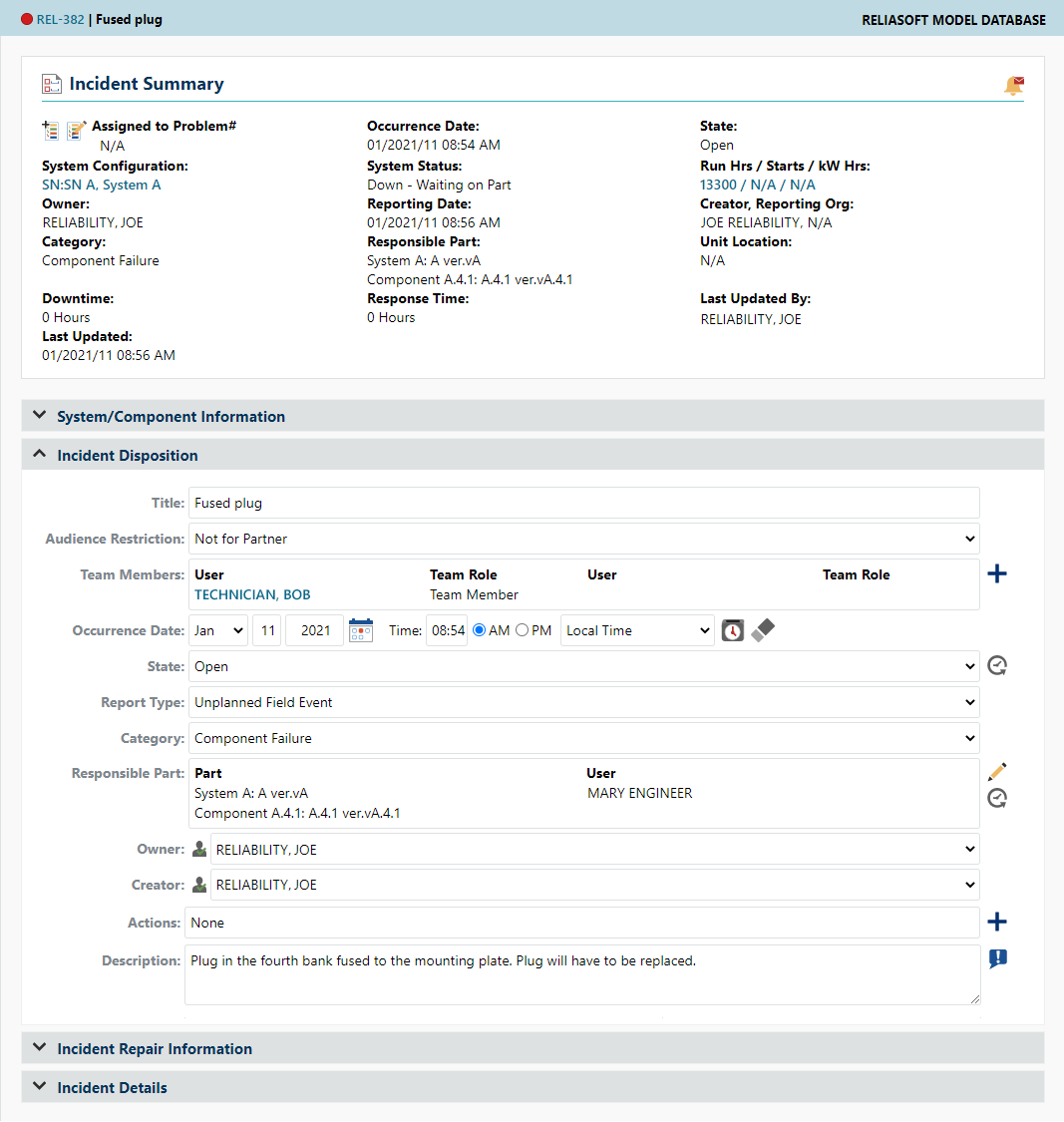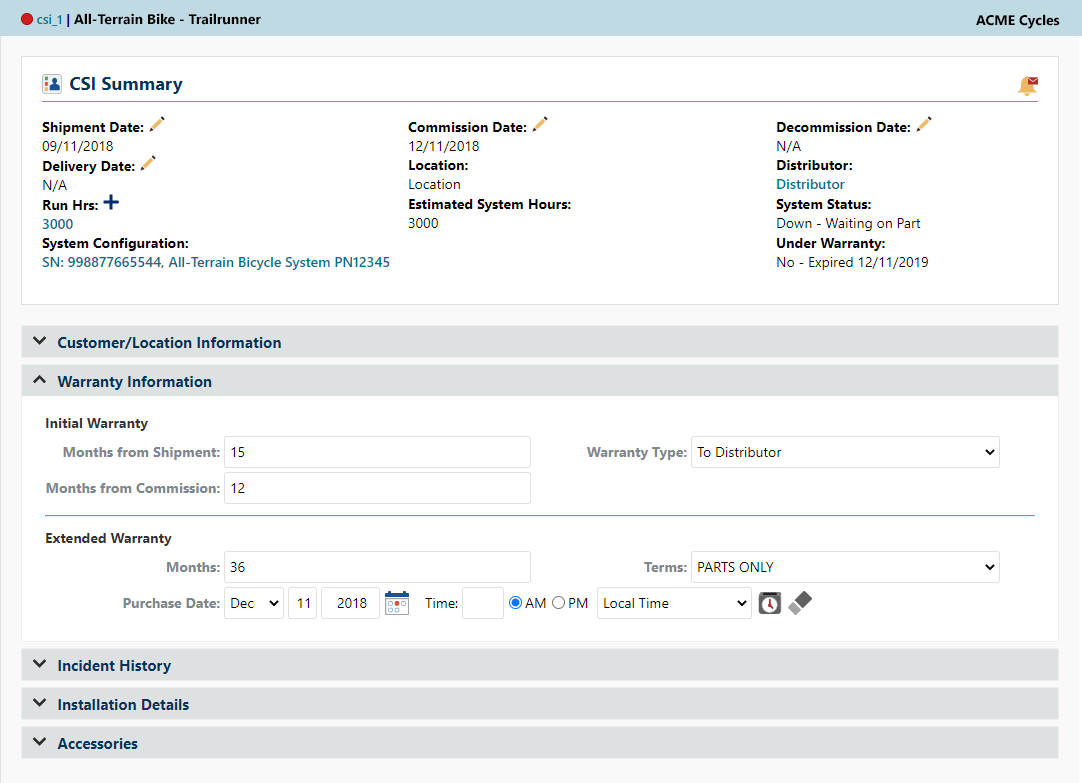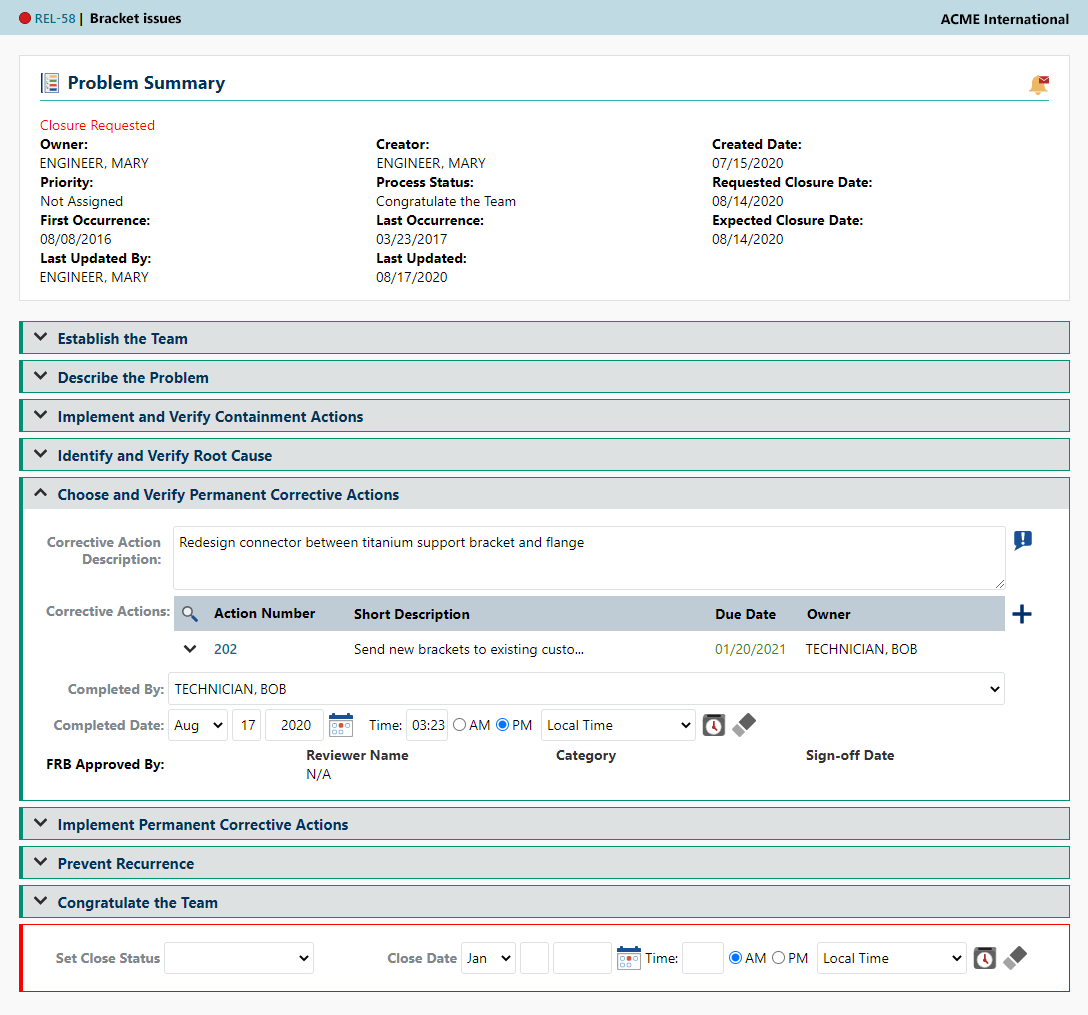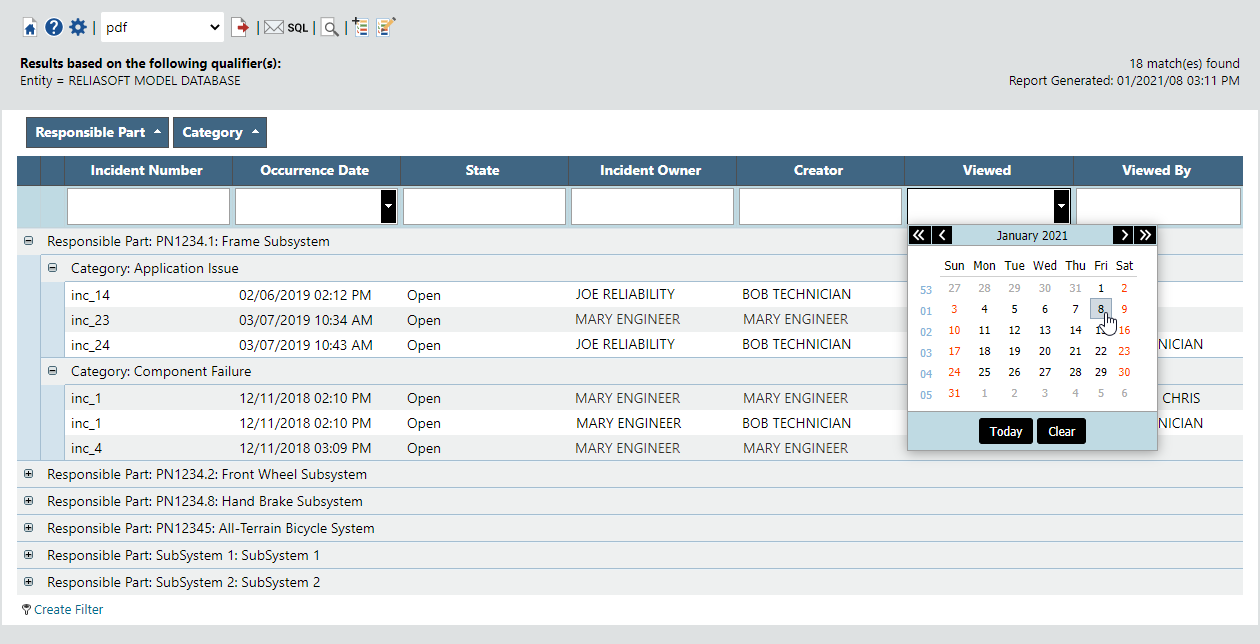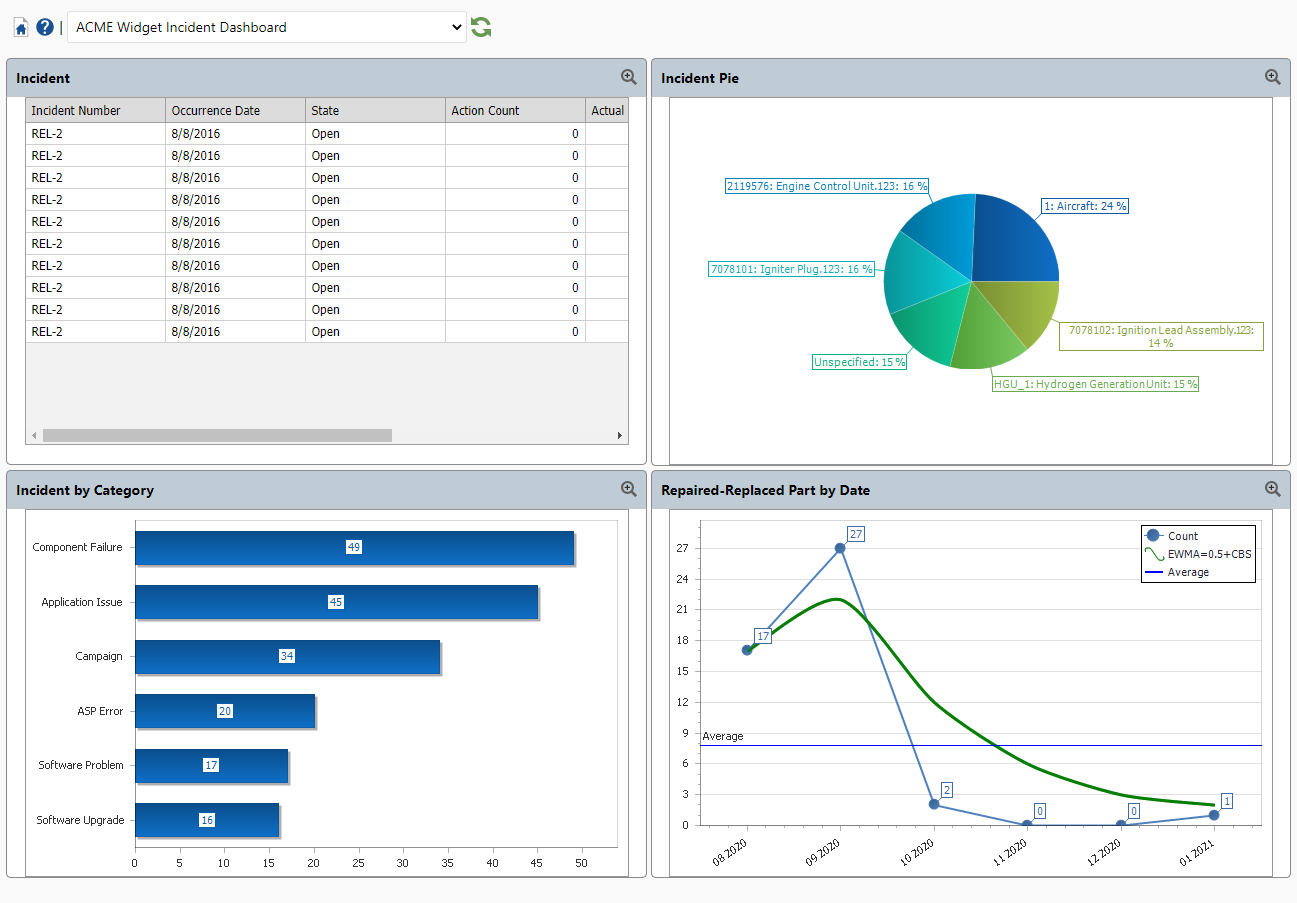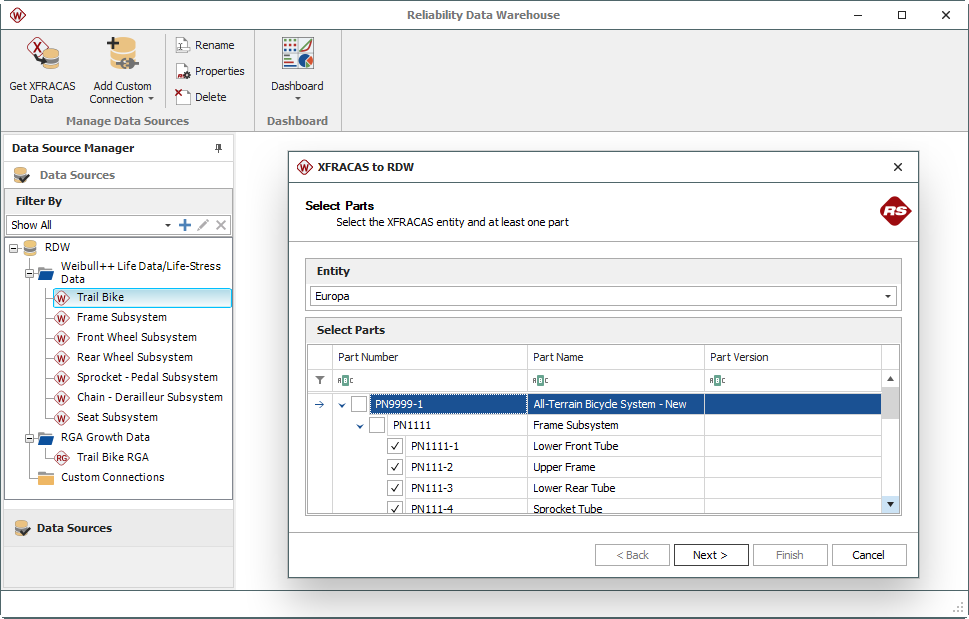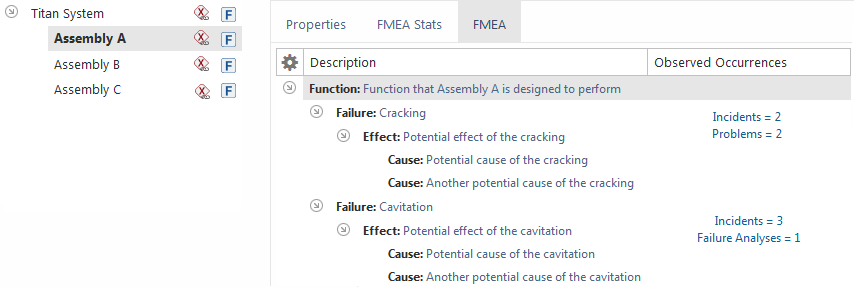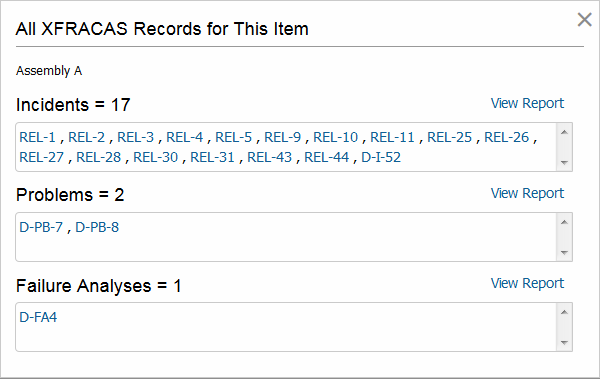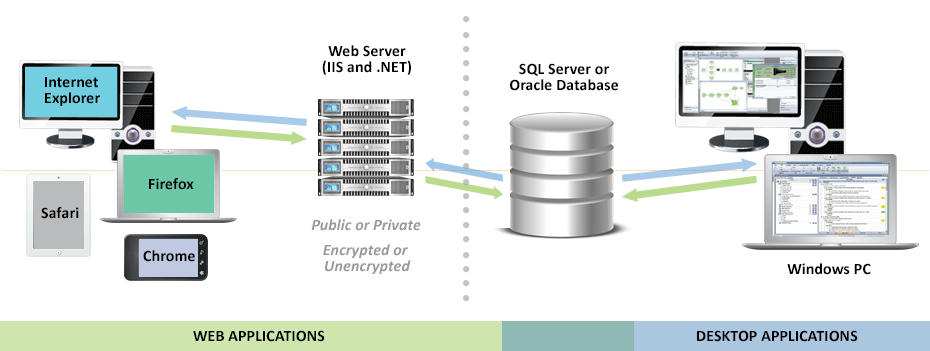Highly configurable to meet your needs
XFRACAS can be implemented with a single entity (where all users share the same configuration settings and data) or with multiple entities (where different business units have their own separate settings, data and permissions), where you can:
- Turn features on or off
- Configure built-in fields and preferences
- Create your own custom fields
- Set permissions to control which features a user or group can access
XFRACAS provides tools for organizations that need additional access restrictions, secure communications and tracking capabilities. You can configure XFRACAS to:
- Restrict unauthorized users from accessing certain records through the use of security levels
- Track who has viewed a particular record as well as the date and time when they viewed it
- View a historical “snapshot” of data as it existed at a specified point in time
- Notify users (via a daily, subscription-based e-mail digest) when records have been updated
- Automatically disable account access after users fail to log in for a specified period
The optional Go-Live Service includes an on-site visit from an XFRACAS implementation specialist, training for up to 10 “power users” and assistance to configure your implementation to meet your particular processes and needs.


